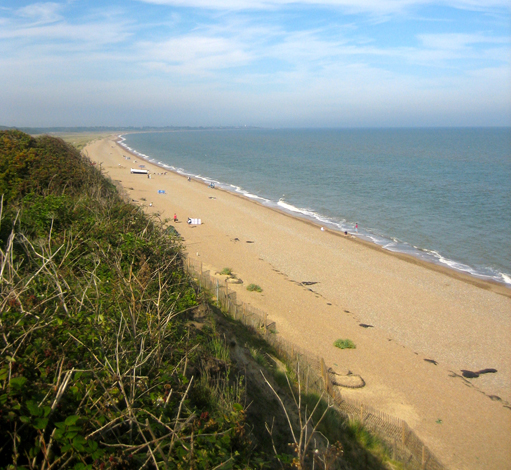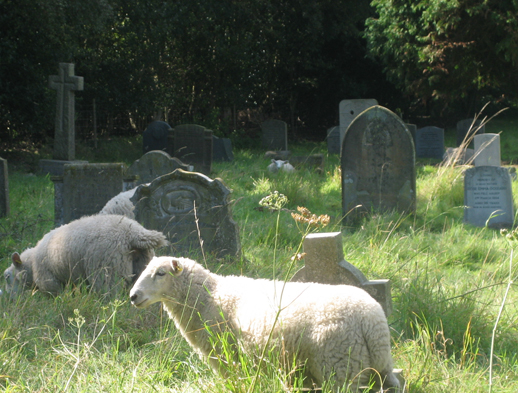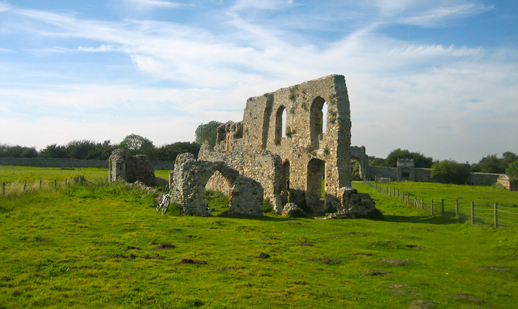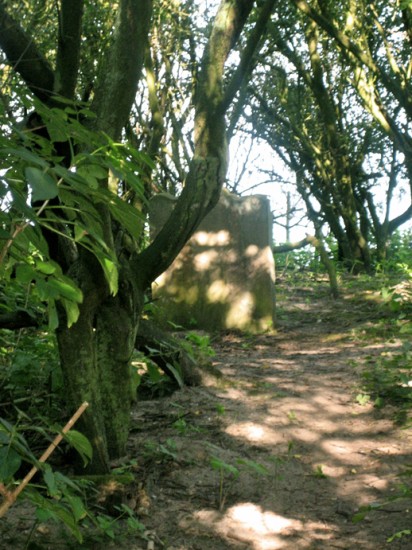
by Jude Rogers.
2. Dunwich, Suffolk
Everyone knows about the bells. They stand on the shoreline, facing the waves, an ear cocked towards Belgium, conjuring up the sounds they imagine chiming out of the sea. Before storms, legend has it, the bells of the drowned churches are heard best; they are augurs of what might emerge from the skies and the wet. According to the fishermen and the fabulists, they are also reminders of what did.
Under the water, however, you doubt there are any sounds at all. The bulk of what used to be Britain’s third largest fishing port lies deep in sand and silt, a square mile of roads, houses, hospitals, friaries, chapels, those myth-making churches, plus a palace and a harbour, are long lost to erosion. You still arrive in Dunwich expecting grandeur, however; what you find is touchingly small, yet still it touches.
We approach Dunwich from the heath, alive with the purples and violets of late summer. Here, nature breaks from the mainland, suddenly, violently – goodbye Suffolk farmland, furrowed for harvest, here is heather and scrub as far as the eye can see, still unsettling somehow in the full force of sunshine. This was once the Sandlings, stretching all the way to Ipswich. Cleared of woodland in Neolithic times, sheep began to graze, and small flowers slowly grow. Today, single trees stand alone in our path, homes for nightjars, green woodpeckers, woodlarks and Dartford warblers. In the peaceful warmth of September, all are silent today.

As Dunwich begins, the sheep graze in the local cemetery, introduced by a sign on the brickwork by its gate. The grass stretches up over the grey, weathered stones, rising higgledy-piggledy around these mounds of white wool. Across the narrow road, an elegant sign introduces us to the village, near to another, wooden sign for Leet Hill. The locals used to congregate here on the town’s borders, I read later, back when the sea was much more than a stroll away. You cannot see the sea here, let alone hear it, but you can somehow sense its closeness, feel its tidal pull.
Two minutes on, past the museum and the pub, turn left: there it is. It arrives on the eye like an assault, an attack. The shingle is sharp and pointed underfoot, the waves thrashing and insolent, even on a glorious day like today. The beach slopes down steeply, and angrily, to the water. I throw myself down, and go in, feel the shards, then smooth sand, then the stones coming again, jagged, forcing my feet away.
The seabed doesn’t want me there, and I sense it. It wants to be left to itself.
Out of the water, I try and take a photograph of how mighty it looks, here, up close, but my camera can’t capture it, not even a few feet away. Somehow this makes it all the more powerful.
Back on hard land, I wind my way up to the cliff edges. More signs warn of the dangers, but the shore looks deceptively smooth from here. To the north, it curves gently up towards Southwold, the lighthouse and pier pretty dots in the viewfinder. To the south, the white dome of Sizewell B glows out of the heat haze, overlooking the water, generating electricity. Later, I read about the faults it has suffered, the fire last summer. I think of the storms that still hit here, Fukishima, the Geiger pulse of recent history.

Then I arrive at the friary, the last part of Dunwich’s distant past that still stands. It was moved here in 1290, a hundred years after Flemish troops tried to land here and depose Henry II, 50 years after the town had five royal galleons, but also four years after a huge gale struck East Anglia, silting up the river that made the town prosperous, marking the moment so much of the town started to slip away. In 1328, another storm swept the bulk of this friary into the sea; twenty years later, two more churches were drowned. By the 1500s, St John The Baptist and the marketplace disappeared over the cliff. By 1919, All Saints finally joined them.

I stand quietly afterwards, ten metres away on the footpath, a fence separating us from the edge, the steep drop. Then I see it: a gravestone deep among the trees. Then I hear the bells, feel the roar.